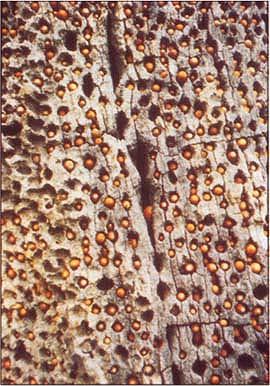
You can hear their sounds here (though those of you living in the canyons likely don’t need this!). I find the Acorn Woodpecker more common in the lower canyons than the upper canyons perhaps largely because the lower canyons have more Coast Live Oak. The Cornell Lab will send you updates about birds, birding, and opportunities to help bird conservation. Male and female birds are easily identified: Females have an extra dark (black) band between the bill and the head, males do not. Here is an excellent article on Cornell’s site about our common Acorn Woodpeckers and probably includes a few facts even we experienced folks don’t know!Īcorn woodpeckers actually “flycatch” as well, venturing out to catch insects in flight. They will use telephone poles, living trees and dead snags as homes and for their famous “granary trees”. Cornell Lab of Ornithology 159 Sapsucker Woods Rd Ithaca, NY 14850. Previously described morphological variation in bill sizes also coincides with the vocal groups found in this study, in which large and small sizes are grouped separately.Male Acorn Woodpecker on a granary tree Blackstar CanyonĪcorn Woodpeckers are extremely common here where there are oak trees, acorns being a source not only of food (yes, they do eat them) but when stored, a basis for insect production. Look (and listen) for Pileated Woodpeckers whacking at dead trees and fallen logs in search of their main prey, carpenter ants, leaving unique rectangular holes in the wood. It’s nearly the size of a crow, black with bold white stripes down the neck and a flaming-red crest. This FeederWatch cam is located in the Treman Bird Feeding Garden at the Cornell Lab of Ornithology.Perched on the edge of both Sapsucker Woods and its 10-acre pond, these feeders attract both forest species like chickadees and woodpeckers as well as some species that prefer open environments near water like Red-winged Blackbirds. The genetic divergence described in previous studies coincides with the vocal divergence found in this study, with 2 areas promoting the greatest divergence: the Isthmus of Tehuantepec and the Gulf of California. The Pileated Woodpecker is one of the biggest, most striking forest birds on the continent. Our results showed the formation of 2 vocal groups that do not reflect subspecies limits. Specifically, we tested whether divergence in vocal traits mirrored subspecies limits. Such a 'granary tree' may be used for generations and may be riddled with.

Best known for its habit of hoarding acorns: the birds drill small holes in a dead snag, then harvest acorns in fall and store them in these holes, to be eaten during winter. We collected recordings throughout the species' range and assessed the frequency and temporal features of their most common calls to study geographic variation in vocalizations. In some acorn woodpecker family groups, related females lay eggs in the same nest and raise the chicks cooperatively with one or more related males. A clown-faced western woodpecker with a complicated social structure, living in small colonies. It’s not where you’d expect to find a woodpecker, but flickers eat mainly ants and beetles, digging for them with their unusual, slightly curved bill.

On walks, don’t be surprised if you scare one up from the ground. It is widely distributed throughout the Americas and exhibits distinctive morphological and genetic differences among the 7 allopatric subspecies, but little is known about geographic variation in the structure of its vocalizations and whether vocal variation corresponds with their genetic differences. Northern Flickers are large, brown woodpeckers with a gentle expression and handsome black-scalloped plumage. Their social lives are endlessly fascinating: they store thousands of acorns each year by jamming them into specially made holes in trees. This species of Mexico’s Sierra Madre barely reaches into southern Arizona and New Mexico, where it frequents pine-oak forests at middle elevations. The Acorn Woodpecker ( Melanerpes formicivorus) is a non-passerine species of the family Picidae, and therefore its vocalizations are not acquired through learning. Reminiscent of a troupe of wide-eyed clowns, Acorn Woodpeckers live in large groups in western oak woodlands. With its wood-brown back and spotted underparts, the Arizona Woodpecker bucks the black-and-white color trend of most North American woodpeckers.

Studies of geographic variation of bird vocalizations facilitate the understanding of species' divergence and evolutionary histories, as vocal traits vary in response to different factors including the environment, morphology, culture, and inheritance.


 0 kommentar(er)
0 kommentar(er)
